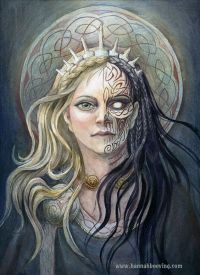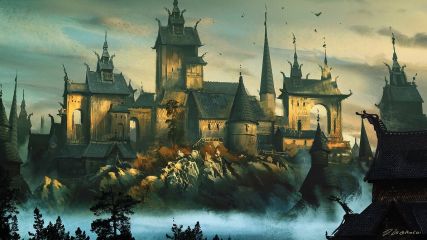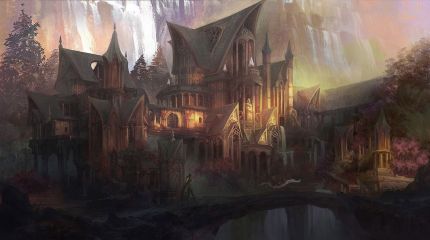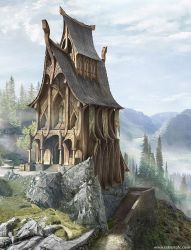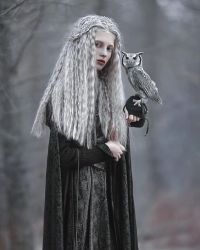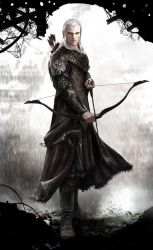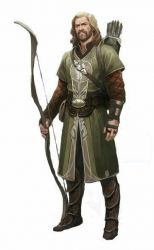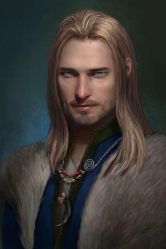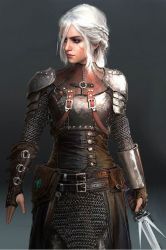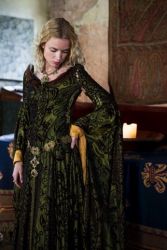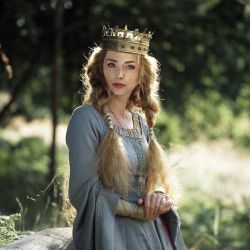Changes: Sim Layout, City-States, RPCSS Factions, and Storyline. Read More
Valgard
From The Citadel
Valgard is a blend of Medieval Scandinavian Myth and History and Elves from LotR.
Valgard is a northern city that lies between Jarnfell and Rusavik, north of vastly profitable grass and farmland.
Valgard spread out over miles of high rocky terrain where individual districts are separated by winding paths, extruding crags, sacred groves, and solidary keeps, inns, and academies. A public transportation system moves people and goods throughout the city. Lush stables for the Alfarian's pampered Nordsvensk horses can be found at ever wayside stop. The entire city is protected by a wall that sits more then three stories below the lowest inhabital structure. The wall of Valgard runs around the mountainside, where the rock wall is to the outside and rockface of the interior. Guard towers are continually manned every few hundred yards. The architecture of the city is blend of gold stone with dark slate and soaring wooden structures in the style of stave temples wood shingle rooves. It is said that if one climbs to the highest point of the main castle that they might touch the very heart of the moon.
Valgard is the breadbasket of the northern people, and their rolling grasslands provide cereal crops such as barley, oats, and winter wheat. The average Alfarian eats meat only on festival days, but they have access to a wide selection of imported foods, as they are one of the few cereal crop regions. Alfarian's have a wide and varied diet and, like the Euresu and Dyrlings, are food snobs. Read More
- Personality
- What is their personality
- How do they organize themselves: Typically with a King and Queen, sometimes with Two Kings and Two Queens
- Which city-states do they like and dislike
- What is their political mindset
The Alfarians as a people are highly skilled leaders, easily learning such skills as oration, mediation, tactics, mathematics, linguistics, management, economics, and deployment. They share a set of personality traits that include focus, confidence, integrity, inspiration, innovation, passion and -very necessary- patience. Unfortunately, these skills and traits are barely appreciated by the bulk of Valgarin people who prize combat, manliness, feasting, and wit. Ask a Jot why the Alfarians rule Valgard and they will not say, “Because they are most skilled at it.”, but instead say, “They are the only ones who will do the job, no one else wants to run the country.” Consequently, Alfarians live two separate lives, the one they show the public and the one they keep in private. In public, they are tall proud warriors, who make an effort to become skilled in combat, act in all ways that are considered Drengr, sharpen their skills in flyting, and host lavish feasts. In private they prefer their studies and hobbies that include drafting, mechanics, calligraphy, alchemy, and all other medieval activities such as cooking, blacksmithing, and weaving that might be perfected through skill and practice.
This applies to their combat practice. Most Alfarians engage in a strict regiment of physical activity and martial practices. They expect nothing except perfection from themselves.
The Gentry might brag about their Golden Renaissance, and their society of culture and education, but that has always been the way of life for the Alfarians. At this bragging, an Alfararian will only smile wryly, enough to let the rest of Valgard know they think the Gentry to be as soft and foolish as the Jots and Frem. Secretly, they compare their skills to that of the Gentry, arrogantly praising their own people privately.
Outwardly the Alfarians project an aura of calm wisdom, practice lavish forms of hospitality, and follow the expectations of the Havamal diligently. Inwardly, it is only through intense concentration, physical activity and steely control that they keep their innate arrogance and violence quietly locked away. Strangely enough, the rest of Valgard seem to understand this element of Alfarian nature and are careful not to prick their tempers beyond what they can bear. The natural talents of the Alfarians make them a deadly and secretive enemy, able to develop plots within plots, and serve revenge upon a cold platter.
Like most Valgarins, the Alfarian moral and ethical line divides between those of Valgard and Yrsa and those not of Valgard. Honor, law, respect, kinship, these things are reserved for their own people, not those of other kingdoms with different values and different gods. And while the Alfarin may have some martial respect for the Euresu, be fascinated by Zephrin sciences and have no beef with the Smallfolk, it does not change that the other races are not Valgarin.
- Appearance
- What is their physical appearance
- How do they dress
Alfarians have the lightest skin tone, the lightest hair color and the lightest eye color. Read more. Alfarians are "human normal". Alfarians are of standard Height and a Slender-Average Body Type.
Alfarians prefer a style of clothing that creates an elongated look. Their clothing is chosen both for functionality and showmanship. The overall combination of their items is intended to emphasize their tall and lean frames. Men prefer long, form-fitting embroidered tunics below the knee, belted at the hips with cloaks that drape. Tunics may be as long as ankle length, but they are never closed up in the front or back like a robe would be. (Male fashion styles are a blend of LotR Rohan and LotR Elves). Women utilize wide varieties of the styles from Earth's middle ages, 1100-1300, with long tunic shaped gowns, cotehardies, sideless surcoats, long braids, and sometimes veils. They prefer high-quality clothing with tasteful designs and decorations. There is a large market for Zuben fabrics and trim, especially trim shot with metals. They are likely to use fur and knot-work, as well as gold and silver jewelry that display their wealth. Any fur they wear will be of the finest tanning and of the rarest creatures. Men prefer hard leather boots rather than soft leather or wrapped leggings. The women like hand tools slippers and delicate sandals when the weather is good.
- Religion
The Alfarians spiritual beliefs center around two trees, a silver ash tree and a golden elm tree from whom the first people, Ask and Embla, were created. This duality of shadow and light is played out in the Alfarian personality, their cultural tendencies and in their goddess, Yrsa, who is traditionally depicted as half beautiful woman and half-blind and aging crone. She has a white raven known as Speki (wisdom) and a black raven known as Frœði (knowledge).
The Alfarians believe that an apocalyptic event known as Ragnorok has already happened and that the next afterlife will be found in Hodmimir's Holt, a sacred grove where the ash and elm will be, and a new first people, Lif and Lifthrasir will be reborn. Consequently, all Alfarians are burned on the funeral pyre and then their ashes are buried in the ground with a newly planted tree. Ancestor worship is a strong part of the people's belief and most farms and most villages include a Vårdträd, a sacred guardian tree.
The Valgarin Code includes the virtues of Courage, Truth, Honor, Fidelity, Hospitality, Discipline, Industriousness, Self-Reliance, and Perseverance.
- Expanded Lore
- Further reading and links for the culture obsessed.

